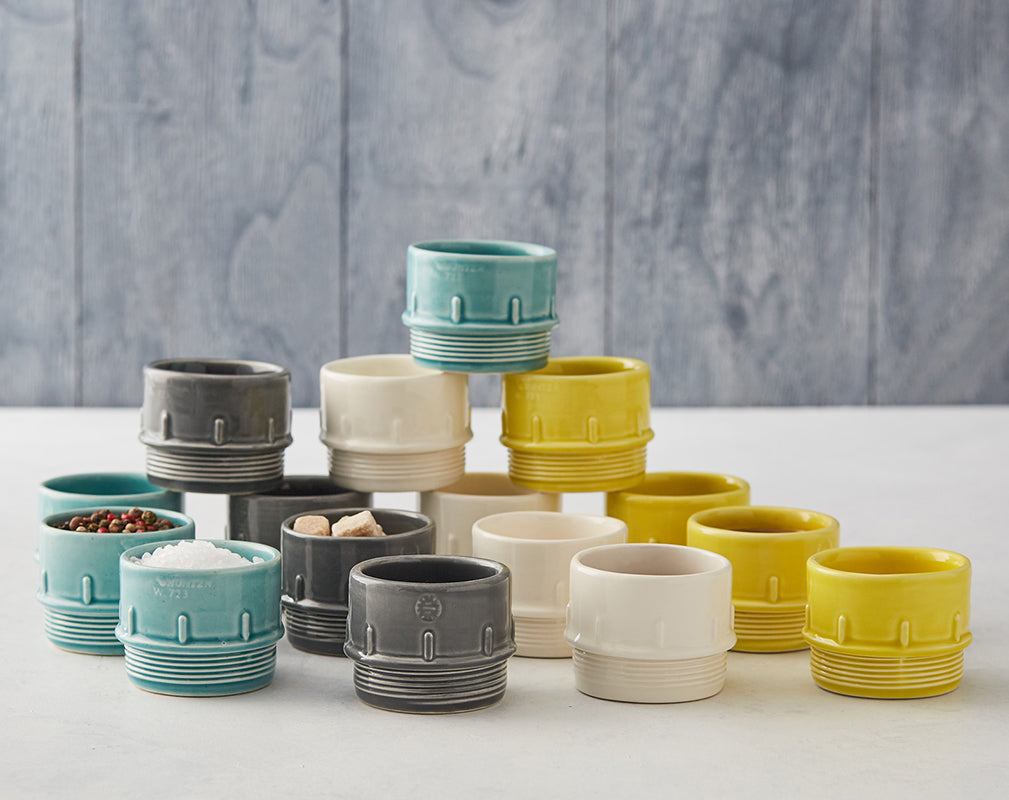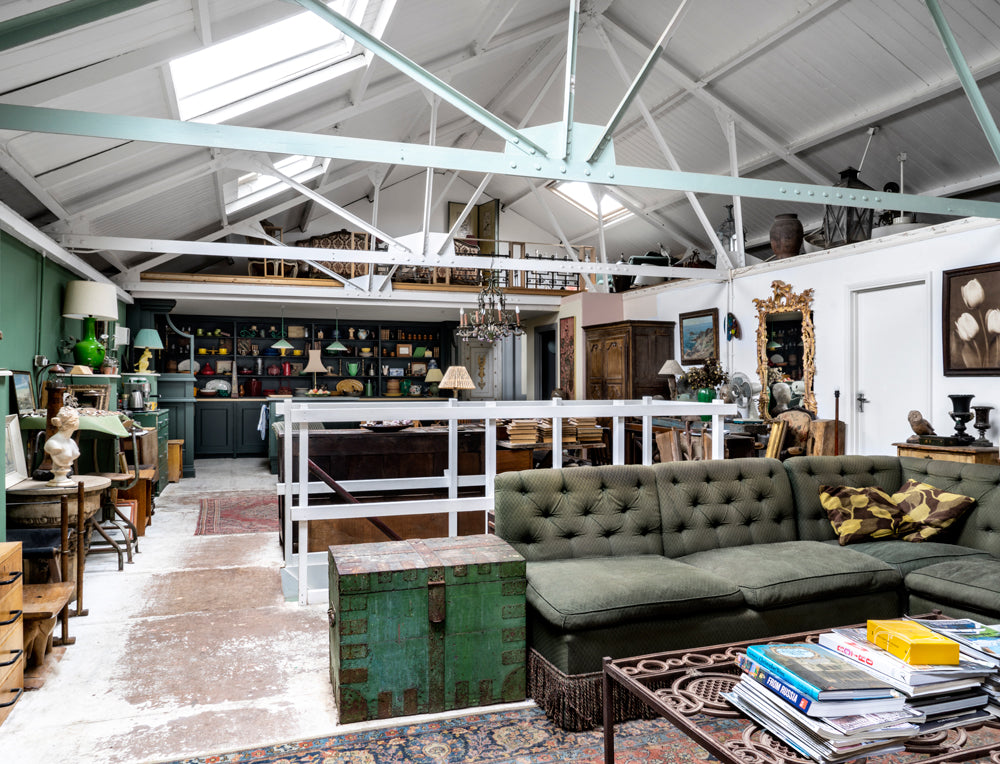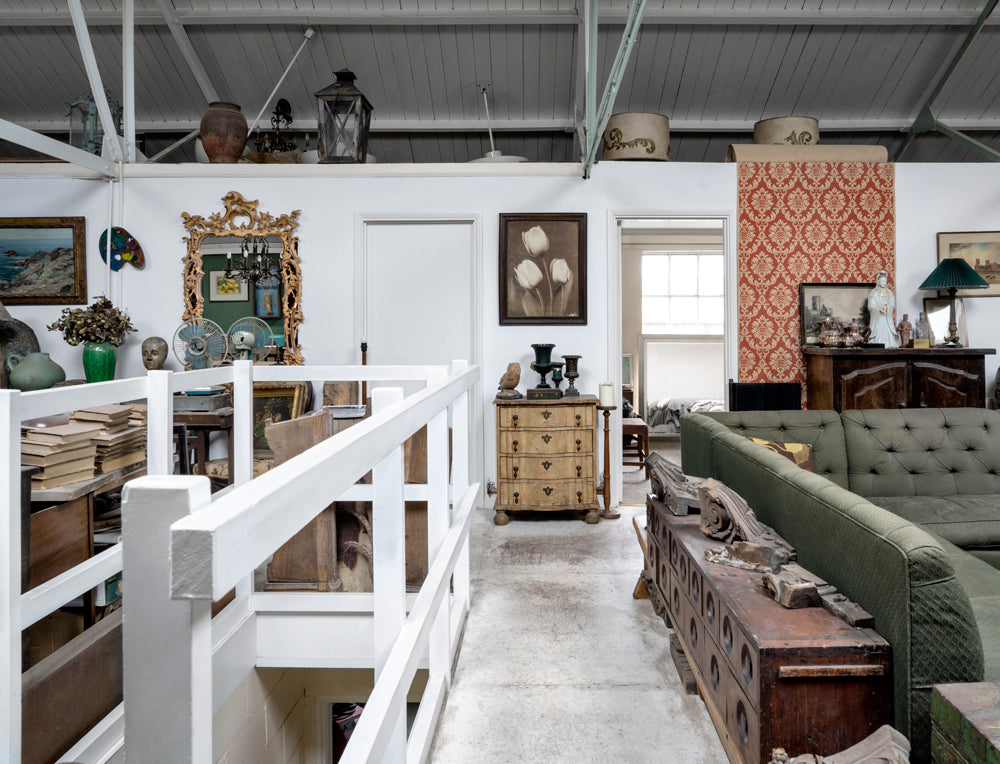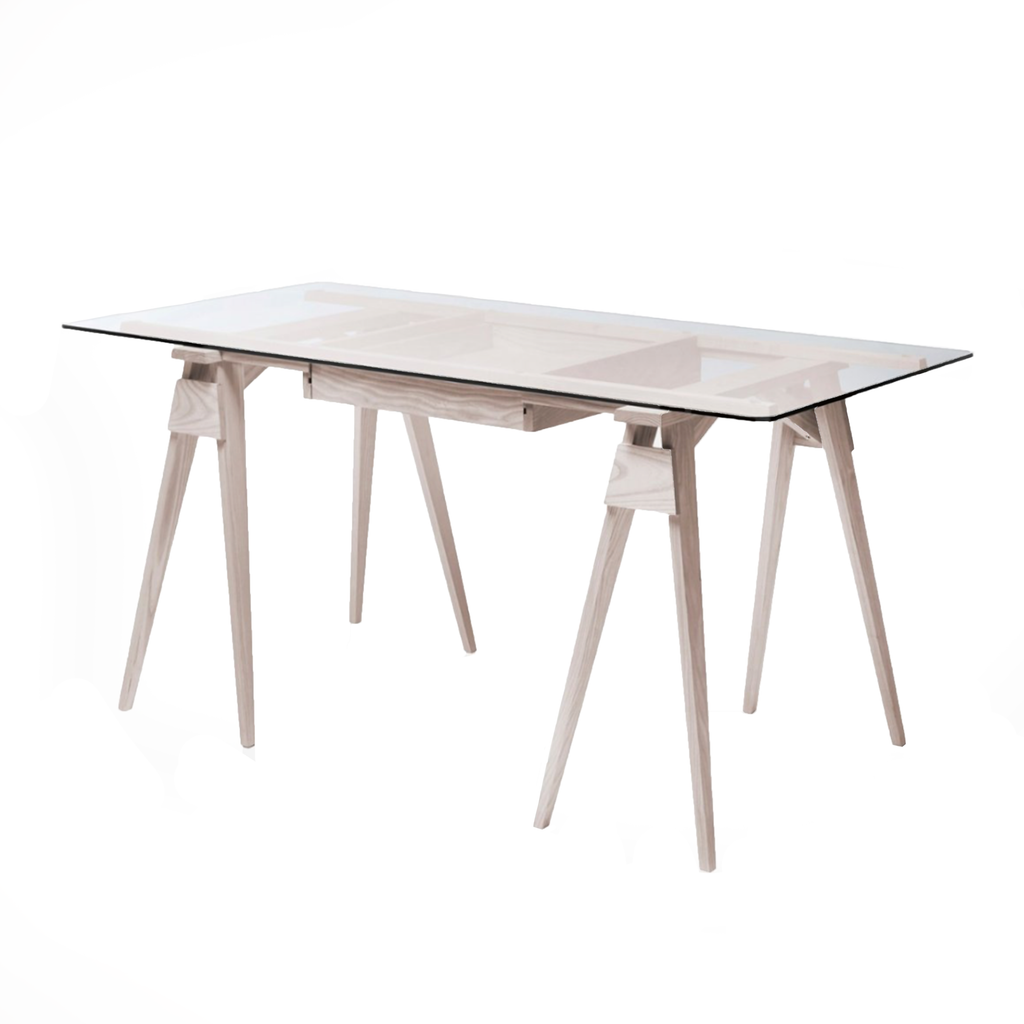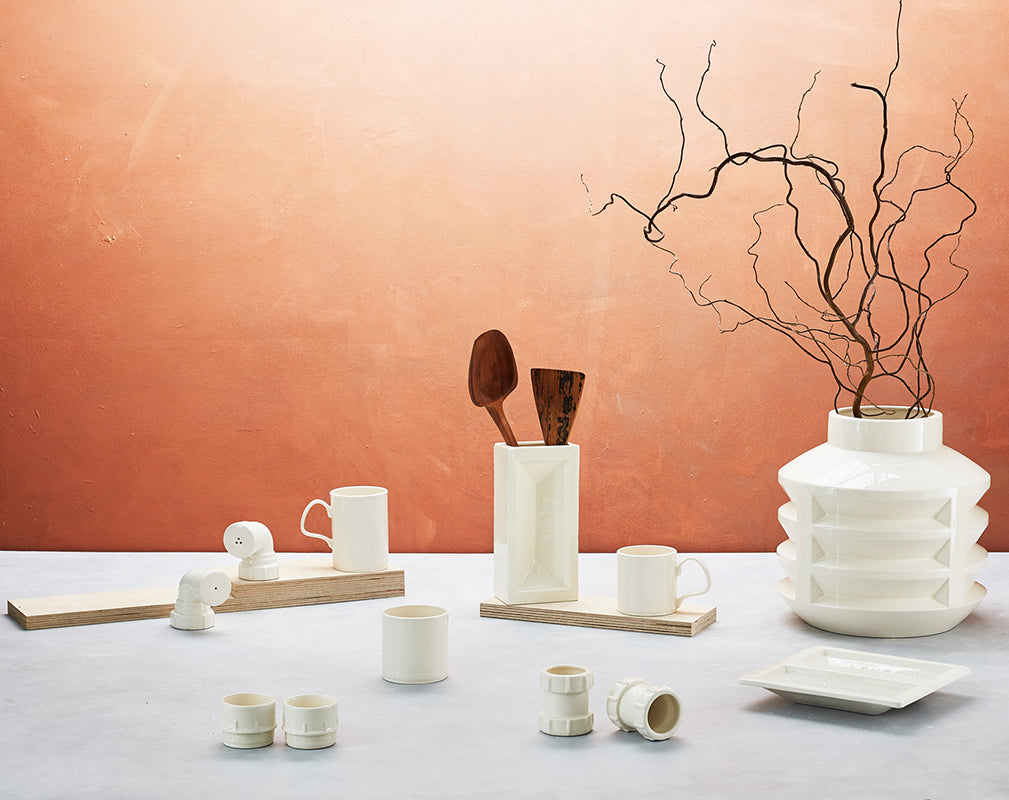
Handmade or hand-selected, we're proud to support exquisite craftsmanship and specialist skills. Join us as we sit down with artisans, curators and designers in our Meet The Designer series.
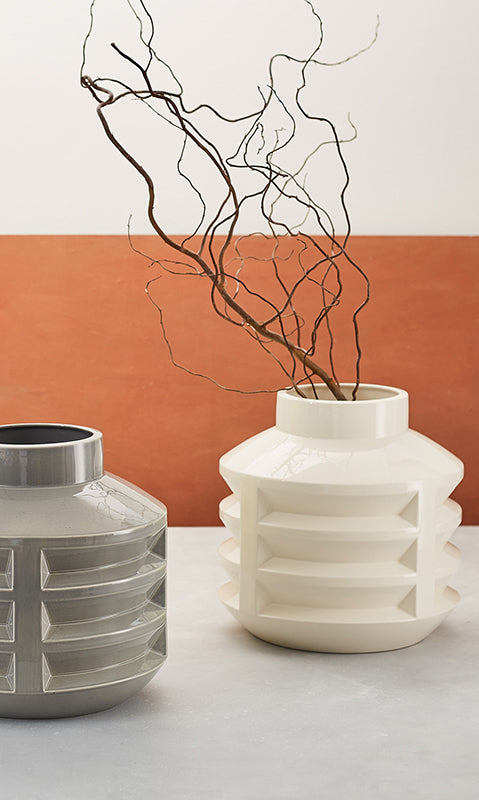
Merging cutting-edge design technology with time-worn techniques, ceramicist Christian Marsden creates unique sculptural accessories and homewares inspired by the urban environment. Since launching StolenForm he has specialised in recasting industrialised objects - but it is by reimagining function and elevating these otherwise ubiquitous objects that Marsden has created new design classics.
What motivated the launch of StolenForm?
I have to go back to my education to give the full picture, my interests were with materials and working processes so 3D studies were an obvious choice at Watford College after leaving school. I found it tough figuring out what my studies were leading to, so I kept pursuing my interests; craftsmanship and sculpture and hoped it would all fit into place. Falmouth University had recently built a brand new campus around that time, open-planned departments across all creative courses, a design hub, wow, it was inspiring, a definite step up to more advanced methods of making with expensive machinery and equipment this time. I knew I had a lot to learn and I would weigh up whether living in a quiet rural setting in Cornwall was right for me. The differences in location were stark and my interests in the built environment were heightened and became central to my inspiration.
I attended a mould making class for ceramics, it was a eureka moment; not only could I replicate three-dimensional forms for my own use, I could then reproduce the finished artworks as a series or limited edition. Back then I thought I would pursue being an artist but the one thing it did confirm is my new interest in ceramics and it felt like I was in the right county to do this as it has a rich history in the material.
I started sourcing objects that related to the city. Objects such as CCTV cameras, padlocks over gates and a London Brick seemed to encapsulate the rawness of the built environment. The latter of which became a momentous object for the brand, which I happened to stumbled across over a summer break when I was working with a friend’s dad as a steel-fitter in North London. With an open eye to what I might find, I saw a single London brick stood upright on a wall as if being displayed on its own plinth. That’s it, I thought and it was bundled in the back of my bosses work van with haste. I’m not usually light-fingered but this I had to take or ‘steal’ if the case may be.
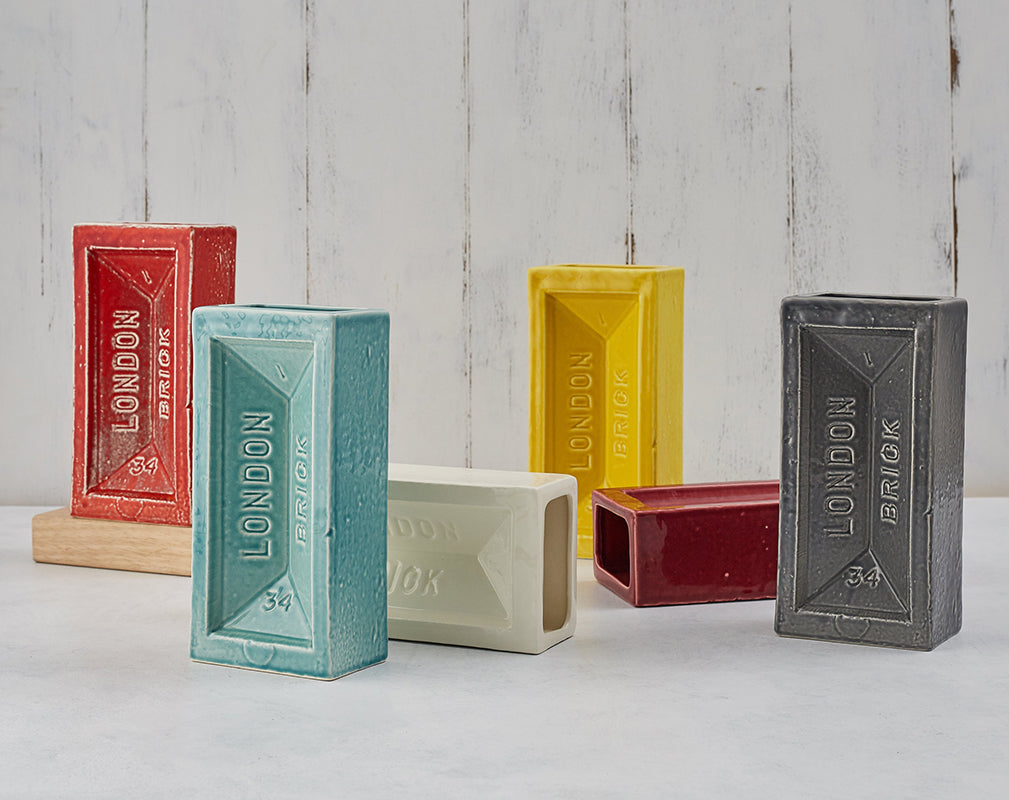
A collection of objects informed by the very foundations of the city, what is it inspired you to repurpose these ubiquitous elements into unexpected accessories for the home?
I had immediate interest from others in the Brick vase at the degree show. The few I had made were sold on the first day. It was the only ‘artwork’ that had a function and it got me thinking that perhaps the more commercial route could be beneficial for me to continue a studio-based practice in ceramics, as a means to finance developments as a maker. The now ‘product’ was strong enough to form the concept for the brand; objects could be reclaimed and elevated to a new level of function and aesthetic value. It certainly wasn’t a sellout option as this was central to what I was setting out to do.
The concept is a purposeful effort to make functional products more engaged and suited to an audience with interests in the city. It was also a celebration of contemporary decoration through seemingly mundane objects and I can’t ignore that I also wanted to bridge the gap between home-ware and a more masculine aesthetic.
Are you able to tell our readers about your process when designing these objects?
I work in a very practical way with tangible objects and materials in my workshop in East Ham. I have shelves stacked with objects, some of which I’ve prototyped to no avail. The tricky part is ticking all of the boxes, is the object recognisable, especially when cast in a new material and finished in another colour? Does it lend itself to a function? Can it be made in ceramics and can I source the object?
Product developments always start with the actual object, which is used as the model to mould directly from. It is in the moulds where the original object is adapted to suit its practical function, with things like bung-holes on the Salt & Pepper pipes, openings on the Brick vase and Tin Can cup or location marks for joining handles on the mugs. It’s important that the objects aren’t altered to the point they become falsely imitated. Moulding directly from the object means the forms are true replicas but the finished products work out to be around 10% smaller due to shrinkage rates when the clay becomes a ceramic throughout the production process.
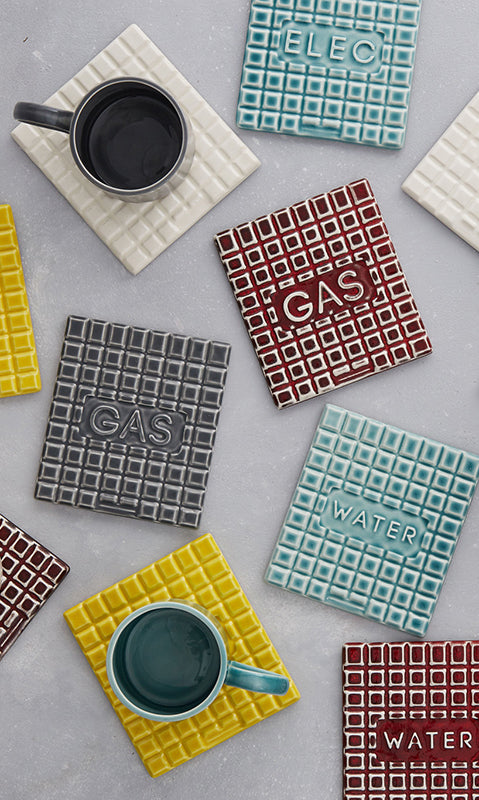

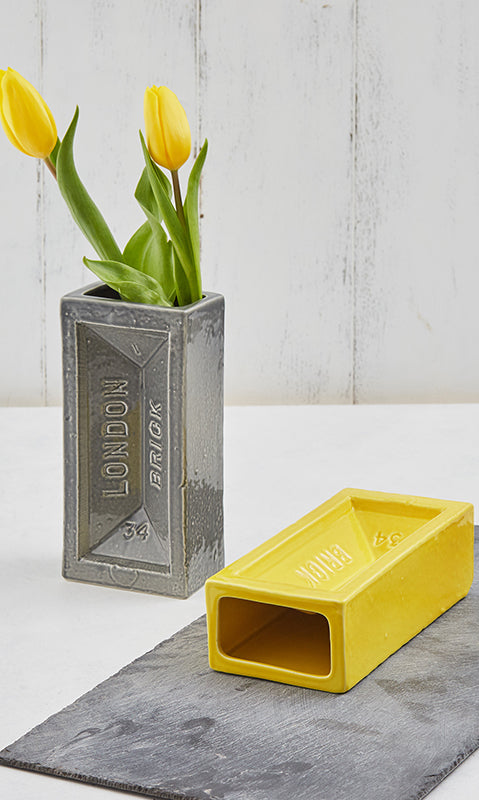
Sleek slip-cast ceramic has an interesting contrast to the industrial objects that inform your designs. What other materials do you work with?
There is a certain amount of refinement that slip-casting brings to the products as they have an even cast thickness, which is often quite thin and gives an elegance to the contrasting unfinished qualities of say, a press moulded house brick. I believe it is this juxtaposition that helps elevate these object to a higher material status, it’s the opposite of being kitsch in my eyes. I’m currently researching other clay types that resemble the original object more closely. It’s early days but I would very much like to launch terracotta versions of the Brick vase, Brick dish, and Chimney Cap vase. I’ve also sampled a grey stain in an earthenware slip and once fired its hard to tell the difference between that and concrete. I’m quite excited about this.
What’s next for StolenForm? Is there anything we should know about?
I’ve started looking at larger subject matter, like buildings. I want to abstract the forms found within architectural structures and to celebrate the materials and processes used in their construction.
The Hayward Gallery is a good example of this as it has beautiful timber impressions in the shuttering concrete walls. The structure is quite complex and made up of lots a blocks on different levels so a simplified section of the building could lend itself to being the form of a product.
